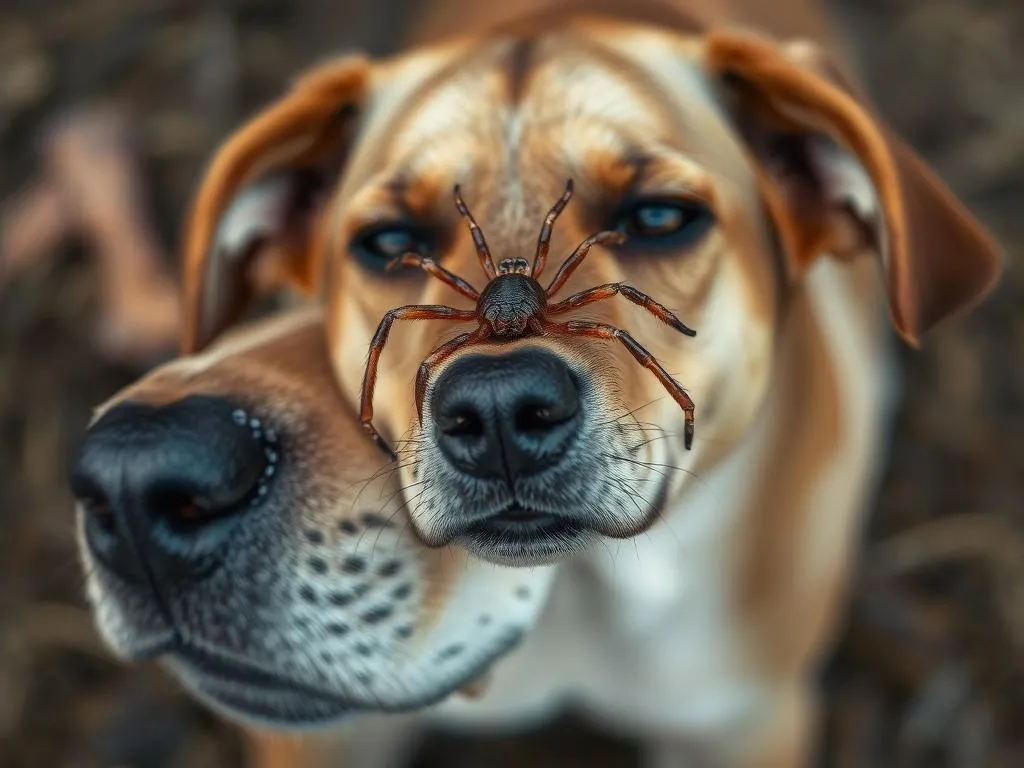
Introduction
When it comes to our furry friends, dog health care is crucial. Dogs are more than just pets; they are beloved members of our families. Therefore, it’s essential to keep them healthy and safe from various health risks, including parasites like ticks. Ticks are common nuisances that can pose serious health threats to dogs. If you’ve recently discovered a dried dead tick on your dog, it’s important to know how to handle the situation effectively and ensure your pet remains healthy.
Recognizing tick-related health issues is vital because ticks can transmit various diseases that may not be immediately apparent. Understanding what to do when you find a dried dead tick can help you take the necessary steps to protect your dog’s health.
Understanding Ticks and Their Impact on Dog Health
What Are Ticks?
Ticks are small, blood-sucking parasites belonging to the arachnid family. They are often found in wooded or grassy areas and can attach themselves to your dog during outdoor activities. There are several types of ticks that affect dogs, including:
- Deer Ticks: Known for transmitting Lyme disease.
- Brown Dog Ticks: Common in warmer climates and can spread Ehrlichiosis and Rocky Mountain spotted fever.
- American Dog Ticks: Often found in the eastern United States and can also transmit diseases.
Ticks have a complex life cycle that includes stages like larva, nymph, and adult. They attach to pets and feed on their blood, which can lead to various health issues.
Health Risks Associated with Ticks
Ticks are not just an annoyance; they can transmit serious diseases. Some of the common illnesses that ticks can spread include:
- Lyme Disease: Caused by bacteria transmitted through the bite of infected ticks, Lyme disease can lead to joint pain, fever, and lethargy in dogs.
- Ehrlichiosis: This disease can cause a range of symptoms from mild to severe, including fever, weight loss, and bleeding disorders.
- Rocky Mountain Spotted Fever: A serious illness that can lead to fever, vomiting, and neurological issues.
After a tick bite, dogs may exhibit symptoms such as lethargy, loss of appetite, and unexplained fever. Long-term infestations can lead to chronic health issues, making it essential to monitor your dog’s health closely.
Identifying Ticks on Your Dog
Signs of a Tick Infestation
While some dogs may not show overt signs of tick infestation, there are several behavioral changes to watch for:
- Excessive scratching or biting at the skin: This may indicate discomfort caused by ticks.
- Lethargy: If your dog seems unusually tired or uninterested in activities, it could be due to tick-related illnesses.
- Swollen lymph nodes: This could be a sign of an underlying infection.
Visual inspection is also critical. Focus on areas where ticks are most likely to attach, such as:
- Behind the ears
- Between the toes
- Under the collar
- Around the tail
Differentiating Between Live and Dried Dead Ticks
Identifying whether a tick is live or dried is essential for assessing potential health risks. Dried dead ticks tend to be shriveled and may appear gray or brown. In contrast, live ticks are often engorged with blood and may be darker in color.
Understanding the status of the tick is crucial because a live tick may still pose a risk for disease transmission. If you find a dried dead tick, it’s essential to take immediate action to ensure your dog’s health.
Immediate Steps After Finding a Dried Dead Tick
Remove the Tick Safely
If you discover a dried dead tick on your dog, it’s essential to remove it properly. Here’s how to do it safely:
- Gather your supplies: You’ll need a tick removal tool (available at pet stores), gloves, and antiseptic wipes.
- Put on gloves: This will help protect you from any potential pathogens.
- Grasp the tick: Use the tick removal tool to grab the tick as close to your dog’s skin as possible.
- Pull upward: Apply steady pressure to pull the tick straight out, avoiding twisting or jerking, which can cause parts of the tick to remain in the skin.
- Dispose of the tick: Place the tick in a sealed bag or container and dispose of it safely.
Cleaning the Bite Area
After removing the tick, cleaning the bite area is essential to prevent infection. Follow these best practices:
- Clean the area: Use antiseptic wipes to gently clean the bite area.
- Monitor for redness or swelling: Keep an eye on the site for any signs of infection, such as increased redness or swelling.
Taking these steps immediately after finding a dried dead tick can help minimize health risks for your dog.
Monitoring Your Dog’s Health Post-Tick Removal
What to Look For
After tick removal, it’s crucial to monitor your dog’s health closely. Keep an eye out for symptoms that may arise in the days and weeks following the removal:
- Lethargy: If your dog seems unusually tired or less active, this may warrant further investigation.
- Loss of appetite: A sudden decrease in appetite can indicate underlying health issues.
- Fever: A persistent fever is a sign that something may be wrong.
If you notice any of these symptoms, it’s essential to contact a veterinarian for follow-up care.
Veterinary Check-Up
Even if your dog appears healthy after tick removal, a veterinary check-up is advisable. A vet can perform tests to check for tick-borne diseases and provide necessary treatments if needed. Common procedures may include:
- Blood tests: To check for the presence of tick-borne illnesses.
- Preventative treatments: Recommendations for future tick prevention.
Regular veterinary visits play a critical role in maintaining your dog’s health and catching any potential issues early.
Preventing Future Tick Infestations
Tick Prevention Methods
Proactive measures are crucial in preventing future tick infestations. Here are some effective tick prevention products:
- Tick collars: These are designed to repel and kill ticks.
- Topical treatments: Applied to your dog’s skin, these treatments can provide protection for several weeks.
- Oral medications: These can be an effective option, providing protection against ticks and other parasites.
In addition to these products, some pet owners explore natural remedies, such as essential oils. However, it’s important to consult with a veterinarian before using these alternatives, as their effectiveness varies and some can be toxic to pets.
Regular Grooming and Inspection
Routine grooming is a valuable practice for preventing ticks. Here are some tips:
- Brush your dog regularly: This helps remove loose fur and debris, making it easier to spot ticks.
- Check your dog after outdoor activities: Make it a habit to inspect your dog for ticks after walks, hikes, or playtime in the yard.
- Create a grooming schedule: Establish a routine for grooming and inspecting your dog, ideally at least once a week.
By incorporating regular grooming and inspections into your routine, you can significantly reduce the risk of tick infestations.
Conclusion
Addressing tick issues promptly is vital for your dog’s health and well-being. Finding a dried dead tick on your dog can be alarming, but knowing how to handle the situation can mitigate potential health risks. Regular veterinary check-ups and preventive care are essential in keeping your furry friend safe from ticks and the diseases they carry.
Maintaining a proactive approach to dog health care will ensure that your pet remains healthy and happy. Stay vigilant, and remember that your dog relies on you to keep them protected from potential dangers like ticks.
By staying informed and prepared, you can help your dog enjoy a tick-free life.









